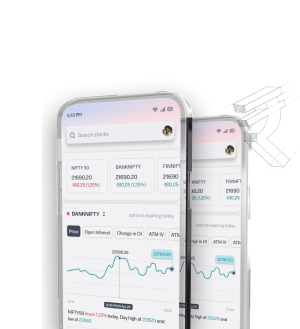RSI: J. Welles Wilder Jr.'s Indicator for Overbought and Oversold Conditions
The Relative Strength Index is essential to traders because it shows when the market is at extreme highs or lows. Developed by J. Welles Wilder Jr. in 1978, it uses a reverse scale of 0-100 to track alterations in prices.
This will help us in making good trading decisions. We are going to discuss how the RSI can improve our RSI trading strategies. It will help in understanding whether to buy or sell.
If the RSI is over 70, a stock might be too pricey. This may be an indication that it is time to sell one's shares at a profit. If it falls below 30, the stock probably costs too little. This could be an appropriate opportunity to buy and resell for a higher profit later.
Now, we will actually see how the RSI works in the large markets, like the S&P 500. It can be used with other tools to make better trading plans.
Key Points
- RSI oscillates between 0 and 100, reflecting the price momentum.
- An RSI above 70 shows overbought conditions, while readings below 30 indicate oversold conditions.
- The most common time period in computing RSI is the previous 14 days.
- RSI can also be used for whole markets, not just for single stocks.
- While RSI gives useful short-term information, it might miss important qualitative factors that impact stock performance.
- Using RSI with other tools like MACD can improve choices in trading.
Introduction of the Relative Strength Index (RSI)
One of the widely-used tools in technical analysis is the Relative Strength Index, or RSI, developed in 1978 by J. Welles Wilder Jr. It helps us see how strong price changes are in markets.
This oscillator shows the strength of the price of an asset. It pinpoints whether prices are too high or too low, thus helping us make improved decisions.
RSI ranges from 0 to 100. The reading above 70 is an indication that prices have gone too high. Readings below 30 mean that they are too low. These levels help us identify the time for buying or selling.
The usual RSI setting is 14 days, but the trader can use his discretion and set it according to his strategy. A strong price movement gets a score of 80 or 90. Knowledge about RSI helps in good trading decisions.
Using the Relative Strength Index helps us understand market trends more clearly. It gives us signals about market changes. We will learn more about it soon to prepare for using it in our trading.
Grasping the Concept of RSI
The Relative Strength Index (RSI) is important in trading plans. It helps us understand if the price of an asset is increasing or decreasing too fast. This information is then used by traders to find good opportunities in the market.
What is the Relative Strength Index?
What exactly is RSI? Well, it's an indicator that follows prices; it gives readings in the range between 0 and 100. If it's over 70, then probably it's too high. If below 30, it would be too low. This way, the RSI allows a trader to judge the moment to buy or sell.
RSI History and Development by J. Welles Wilder Jr.
J. Welles Wilder Jr. developed the RSI in 1978. His work revolutionized the trader's perception of the market. Wilder wanted an easy tool to show market trends and possible changes. Today, RSI forms a very integral part of trading, showing its value in many markets.
Locating the RSI
Well, it turns out to be important for any trader: to learn how to calculate the Relative Strength Index, checking, essentially, average gains and losses over 14 days. It will help us find the so-called Relative Strength, which is necessary for the RSI.
How to Find the RSI
To start the RSI type the following steps:
- Calculate the average gains and average losses over the period selected.
- The following formula gives the Relative Strength: RS = AvgU / AvgD.
- The RSI formula will read: RSI = 100 – 100 / (1 + RS).
There are ways to find average gains and average losses. Since each method gives just slightly different values, this now allows us to pick the best one for our trading style:
- Simple Moving Average: AvgU is the sum of upside price changes over N bars, divided by N. AvgD is the sum of downside price changes over the same period, also divided by N.
- Exponential Smoothing: This method takes into account only the most recent prices. The calculation for AvgUt is AvgUt = a * Ut + (1 – a) * AvgUt-1; where a = 2 / (N + 1).
- Smoothing by Wilder's Method: In this method, we take a equal to 1/N, and 1 a equal to /N.
RSI Calculation Formula Explained
Like so: once we find our RS, we will plug it into the RSI formula, which gives us a number of 0-100. An RSI of 0 means the market is heading down, and 100 means it's going up.
Values above 70% indicate that the market is overbought, while values below 30% show it is oversold. This makes the RSI important for traders to manage risk and decide when to enter or exit the market.
In real life, we can use an RSI calculator to compare a maximum of up to three different RSI indicators on a chart, which better helps us make choices in the fast-moving trading world.
Interpret RSI Levels
Traders need to know about the Relative Strength Index. The index covers a range of 0 to 100 and further helps to indicate the market trends. By indicating the overbought and oversold levels, one can pinpoint good trading opportunities.
Overbought Conditions vs. Oversold Conditions
An RSI reading above 70 indicates maybe the security is too high; it probably will fall, whereas an RSI reading below 30 means maybe it is too low, so maybe it will rise. These levels can thus be watched to help in trading plans.
Importance of the RSI Levels 70 and 30
RSI levels such as 70 and 30 are critical RSI levels. When the RSI rises above 70, a decline is expected, and traders might sell or reap profits at the time.
On the flip side, as the RSI dips below 30, this could provide a good buying opportunity. This is because prices might back up again.
| RSI Level | Interpretation | Action |
|---|---|---|
| Above 70 | Overbought conditions | Consider selling |
| Below 30 | Oversold conditions | Consider buying |
| Crossing 50 | Neutral stance | Wait for confirmation |
RSI Trading Strategies
Good RSI strategies will enhance your trading. The Relative Strength Index shows us the trend of the market and price changes. We're going to discuss two important strategies: the overbought/oversold method and RSI divergence for trend reversals.
Classic Overbought/Oversold Trading Technique
It uses the RSI levels in determining the best moments to buy or sell. If the RSI is over 70, it might be too high, and a price drop could occur. This could mean that if it is over 30, it might be a good opportunity to buy since prices may rise.
- We watch for opportunities to sell when the RSI rises above 70.
- This would be a buy opportunity when RSI falls below 30.
This strategy helps us take advantage of changes in the market. Using shorter RSI periods, like 7 or 10, can capture fast price changes.
Using RSI Divergence for Trend Change Signals
RSI divergence helps traders notice when trends might change. This occurs when RSI and price head in different directions. For example, if prices just keep going up but RSI does not, it could mean that prices will drop.
- Find instances where the RSI diverges from the price movement.
- Use this divergence as a confirmation tool to get long or short positions.
Using the overbought/oversold method with RSI divergence creates a strong trading plan. These strategies are important for understanding market changes.
| Strategy | Key Indicators | Action |
|---|---|---|
| Overbought/Oversold Classic | RSI Above 70, RSI Below 30 | Sell when above 70, Buy when below 30 |
| RSI Divergence | Divergent movement between RSI and price | Look for reversals based on divergence |
RSI in Technical Analysis
The RSI is an important indicator in technical analysis. It helps us gauge market conditions and in price movement. It studies average gains/losses over 14 days to identify trading signals.
If the RSI is over 70, then one may expect the market to change directions—that is, the prices may begin going down. Conversely, an RSI below 30 shows one the right timing to buy. These levels provide an insight into how the market feels and how prices might change.
We would use the changes in the failure swings to predict a change in the market. The bearish failure swing occurs when the RSI reaches 70, comes down, and doesn't come back up—that says a price can drop. Divergence: that is when RSI and price go in opposite directions, showing a possible trend change.
The RSI runs from 0 to 100, indicating market strength. It usually stays between 40 and 90 while moving upward and from 10 to 60 during a bear market. Knowing this helps in making better choices when trading.
The RSI is adjustable, usually using a 14-day period but changing when necessary. This ability to adjust helps us stay updated with market changes. It allows us to enhance our trading plans.
Market Directions and RSI Behavior
The point is to know market trends for good trading; to use the relative strength index as an essential tool that will help us visualize trends and change our strategy.
Finding Market Trends with RSI
RSI by its values shows market trends. If RSI is more than 50, it means the market is going up. If it is below 50, it is going down. Traders watch for levels of RSI above 70 or below 30, which express that the market is too high or too low. Keeping an eye on these levels helps us notice when trends might change.
RSI and Other Technical Indicators
Knowing how the RSI stacks up against other indicators helps us to trade better. One such indicator is the Stochastic Oscillator. It used 80 for overbought and 20 for oversold.
The trading signals are improved with the combination of both RSI and Stochastic. Combining RSI with MACD will mostly let us see changes in trends, which occur when the RSI crosses above 50 and MACD lines are going up.
| Indicator | Overbought Threshold | Oversold Threshold | Application |
|---|---|---|---|
| RSI | 70 | 30 | Identifying overbought and oversold conditions |
| Stochastic | 80 | 20 | Spotting overbought and oversold zones |
| MACD | N/A | N/A | Trend confirmation and reversals |
Looking at these indicators helps us understand the market trends better. Watching RSI and other indicators carefully is important in good trading.
Benefits and Drawbacks of RSI
We look at RSI, where both good and bad traits are noted to influence our trading; understanding this makes the strengths and weaknesses of RSI clear. This will help us use the tool carefully in our trading plan.
Advantages of Using RSI in Trading
RSI has several advantages that make trading better:
- Simplicity: It is simple to use, allowing us to quickly see price trends.
- Locating Reversals: RSI indicates when prices may reverse, which offers investors critical information concerning the market.
- Flexibility: It works with many assets, namely stocks, commodities, and currencies.
- Customizable Parameters: We can adjust the RSI to suit our personal style of trading.
- Divergence Signals: This is useful for making predictions of market changes.
Weaknesses of RSI in Predicting Markets
Although there are several advantages of RSI:
- False Signals: Depending too much on RSI can result in incorrect opinions about the market.
- Lagging: It may not provide timely signals in quickly changing markets.
- Extended Overbought/Oversold Conditions: The RSI can remain in these states longer, making trading difficult.
- It means that it might provide fewer trading signa ls than other tools, like, for example, moving averages.
- Not Ideal for Day Traders: It's better for swing traders than those looking for quick trades.
In short, the RSI is helpful in trading, but it also has some limitations. Knowing these helps us use it effectively in our plans, plus other indicators and market trends.
Advanced RSI Techniques and Approaches
We always try to improve our trading. Using RSI with other tools can really help. For example, adding moving averages or Bollinger Bands with RSI provides strong signals. When these tools match, we feel confident about our trades. We want to give ourselves at least an 80% success rate of locating price changes. In other words, most of the time, our predictions should be correct just within a little bit of range.
We can modify RSI settings according to our trading style and the current market phase. We can try deviations from the classic RSI 14 like 21, 34, 55, or 89. This flexibility will help you find the correct RSI levels for H1, H4, and D1 charts.
Tools like MT4 True RSI Indicator help us to view many settings on differing time frames, which enhances our ability to understand where support and resistance levels are, effectively improving trading.
It is also helpful in using advanced RSI techniques, including moving average crossovers. If the RSI is hitting under 30 at critical times, that's a good time to buy. These strategies will help us make precise and profitable exchanges.
FAQ
Q: What does the Relative Strength Index (RSI) show?
A: The Relative Strength Index (RSI) determines when an asset is overbought or oversold. This helps a trader make trend-based decisions.
Q: How shall we be able to incorporate RSI into our trading plans?
A: We use the RSI to find out when prices are too high or too low. This helps us decide when to buy or sell.
Q: What are the significant RSI levels to watch while dealing?
A: Watch for RSI levels at 70 and 30: if it is above 70, that indicates overbought, while below 30 it indicates oversold.
Q: Can RSI indicate price trend discrepancies?
A: Yes, RSI can show when the price and RSI are not the same. This means a trend could change.
Q: How do we find the RSI?
A: We calculate the average gain and average losses over the last 14 periods. Then we can calculate the Relative Strength by the formula :.
Q: What benefits does using RSI give us?
A: RSI will tell us quickly about price trends. It helps us see when trends might change, which aids our short-term trading.
Q: How do we use RSI with other indicators?
A: We combine RSI with tools like moving averages or Bollinger Bands. This way it makes our trading signals better and stronger.
Q: What are some constraints we should note when using RSI?
A: RSI can issue incorrect signals in rapidly changing markets. Always look at other indicators to keep yourself from making quick, false trades.
Disclaimer
The content provided is for educational purposes only and does not constitute financial advice. For full details, refer to the disclaimer document.




